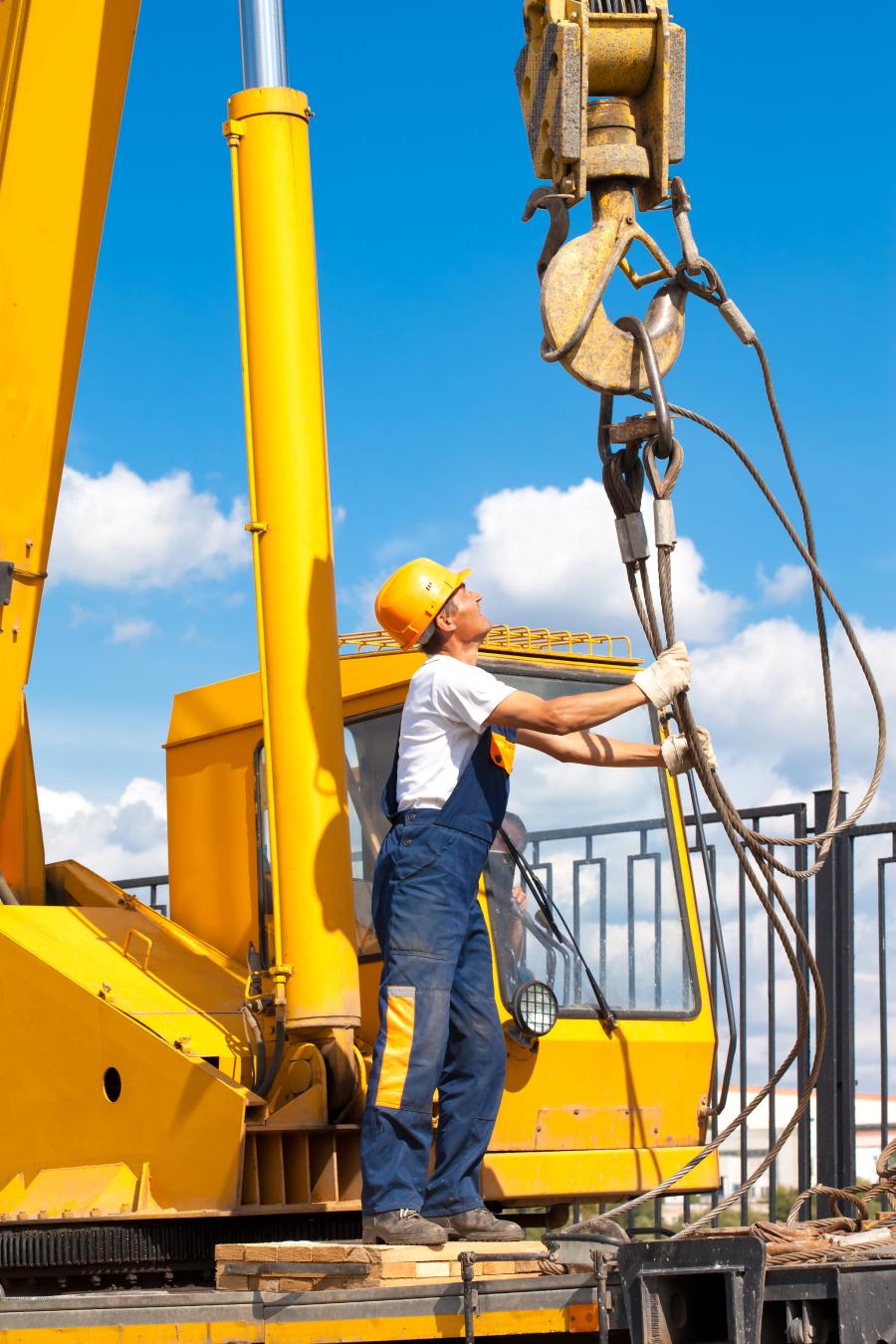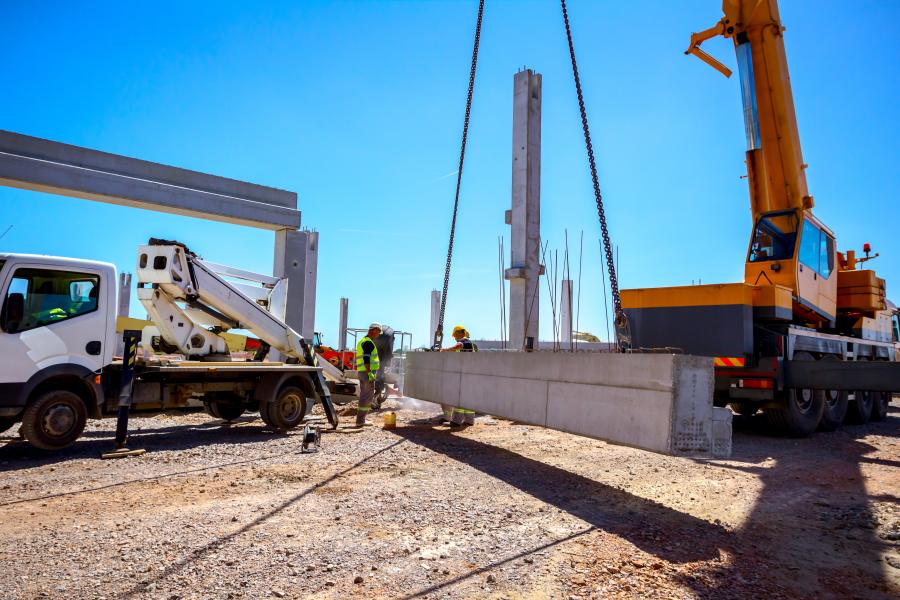Successful rigging requires planning and execution on many levels, including the owner, management, supervisors and riggers.
Ask any "old timer" what you need to be a good rigger and you'll probably get the answer "common sense," said veteran rigging instructor Dan Cashin. He maintains that common sense as it applies to the rigger is the ability to think a job through safely, efficiently and economically.
In his rigging handbook, Rigging Thinking, Cashin, rigger instructor at the Philadelphia Navy Yard, writes about the thought process that should go through a rigger's mind before he or she picks up the first piece of hardware. Planning the rigging process from start to finish, he said, is critical to a successful lift.
"The rigger is a person of unique intelligence and skill," he wrote. With the tremendous increase in crane capacity these days, "too much is riding, sliding or hoisting on the skill of the rigger today. The days of a rigger being nothing but ‘an educated laborer' or ‘strong back, weak mind' are over."
Phrases such as "I think this will work," or "We'll see what happens" are "dirty words" in the mind of Joe Kuzar, technical director of Industrial Training International (ITI). "We hear them all the time," Kuzar wrote in a blog post.
"When we hear these dirty words and phrases, we should stop what we're doing and realize that we don't have a plan. And working without a plan can be dangerous and not very productive."
Kuzar believes a rigger must think outside the box.
"During the planning phase, we can use our imagination and be creative," he wrote. "We can explore new ways to handle loads. We can consider new methods and equipment that we normally don't use. We may find safer and more efficient ways."
All of this is possible during the planning phase, Kuzar said. That's the time to perform the load handling activity on paper and identify gaps. Then, he said, riggers can determine how to bridge the gaps.
"But we only do this during the planning phase," never during the execution of the plan, he stressed. The plan should be so well written that personnel who are not familiar with the load handling activity can quickly be introduced and contribute to it.
"Of course, they should be qualified to do so," and this, too, should be done as part of the planning phase, wrote Kuzar. If it sounds repetitive it's meant to be, so that it sticks in the mind of a rigger.
A solid rigging plan should address the load, load-handling equipment, rigging, the environment, job site, personnel, site-specific polices and procedures and possible contingency plans to address the most probable issues.
Kuzar instructs that the size of the rigging plan should match the complexity of the load handling activity.
"Proper planning leads to a procedure-based execution which has fewer errors," he said.
Performing a load-handling activity with knowledge-based execution requires personnel to rely upon their knowledge and experiences, he wrote, noting that "not all experience is good experience."
Given the choice between the two, "procedure-based execution, driven by a well-developed plan, results in a safer and more efficient execution of the load handling activity with fewer dirty words and phrases," Kuzar said.
Strategy for Teamwork
Crane Tech's rigging instructors teach that every load lifted by a crane has some type of rigging between the crane hook and load. Whether it's wire rope, synthetic or chain slings, spreader bars, shackles, specialty clamps or all of the above, "lifting safety depends on the use of proper rigging components and methods," said the crane training organization.
"To say that safe lifting depends on ‘proper rigging' leaves out a whole host of critical and interdependent subjects," the company said in a newsletter article on rigging planning. "Some of these subjects include knowledge and understanding of various and available rigging components, how to ensure rigging gear is not defective, understanding working load limits and actual application of the rigging."
Rigging requires planning and execution on many levels beginning with the owner, who must ensure that all employees associated with rigging operations are properly trained and are designated to perform their duties based on having sufficient knowledge to work safely.
Management must see that all rigging operations are performed in a safe manner and that proper rigging gear is available. Management also must empower rigging workers to stop any lift they feel is not safe.
Supervisors are tasked with assuring that proper rigging is on the site and assigning rigging personnel with the necessary knowledge and skills for each lift. Finally, riggers must have the correct rigging gear, inspect that gear before each lift and attach rigging components according to proper practices.
And they must preserve rigging gear using proper storing methods. The Crane Tech article emphasized that "riggers must not allow any load to be moved until safety is assured."
Considering Characteristics
The characteristics of a load — its shape, weight and rigging — may vary, but the load itself is fundamentally the same for all lifts, according to NessCampbell Crane & Rigging.
In a blog on the science behind crane rigging, the company emphasized that mathematics, geoengineering and mechanical information are key to "getting rigging services right."
To ensure crews understand each project, riggers outline the requirements of the lift and plan for the use of a crane and components. The interrelated characteristics of the load are measured and considered during the rigging phase.
First, the load details. NessCampbell stressed that "it's crucial to understand the specific details of the load to be transported."
Key characteristics of each load include weight, dimensions, center of gravity, lift/sling points, pickup ratios, location radius, lift height, total weight of the load and all accessories and crane capacity.
"Using a crane load chart, riggers will use the load details of the project plan to identify the appropriate machine for the project, based on characteristics such as length of jib, outrigger spread, ground-bearing capacity, counterweights required, crane weight, make and model and ground conditions."
The load details of the project plan will then be matched against crane capacity information. A crane load chart is used to identify the appropriate machine for the project.
In addition to having the right equipment, crane rigging involves working with geo-technical engineers to ensure the ground can support the load and the crane.
More specifically, NessCampbell said, the area must meet these criteria:
- the ground, if backfilled, was compacted to provide a solid surface.
- the area has no voids or underground services that will weaken the surface.
- adequate space is available to extend outrigger jacks and beams.
- load rigger mats are available if hydraulic mobile cranes are used.
- access roads and final load location can accommodate the load weight.
- any large trees or buildings are noted along the project route.
The rigging plan should illustrate all connection points, forces to be applied and the project's general approach. It's a detailed drawing showing the configuration of all load-lifting points.
The plan also provides information about the slings, shackles, ropes, blocks and beams used during the project. Details gathered in the planning process are incorporated, including the load's center of gravity, any recommended lifting gears or slings and lifting capacity.
"Riggers will also consider weather conditions, such as wind, temperature and visibility when creating the plan," said NessCampbell. These elements can have an adverse effect on crane lifts and are considered during planning.
"The science behind crane rigging establishes good practices and correct lifting methods, showing how loadings can change significantly with only a few modifications. When large objects are moved efficiently and safely with minimal manual handling, major accidents can be avoided."
Successfully controlling lift operations and using lift equipment safely take management commitment, team competence and appropriate resources. But planning and good communication also are key elements of good rigging services, the writer added: "Planning for effective communication promotes safe rigging services."
Once the plan has been established, you will need to follow it closely to reduce the probability of an accident, said Juan Rodriguez, construction engineer. His rigging planning punch list includes:
- verifying all equipment, fixtures and accessories before starting;
- verifying that all equipment has been properly inspected and that such inspections are valid;
- identifying a load manager or a rigging leader. "It can be your safety professional or ordinary lifts, assign a designated leader; for critical lifts, assign a person-in-charge," he said;
- conducting a pre-use inspection and verifying that all components are in good condition;
- conducting a dummy rigging process following the pre-established rigging plan;
- training all workers participating in the process;
- preparing the area where the load is being placed or moved;
- surveying the lift site for hazardous or unsafe conditions;
- clearing the lift path of obstructions;
- identifying the crane operator;
- following specific instructions/procedures for attachment of the rigging gear to the load. "Use proper rigging techniques," he said; and
- stopping the job when any potentially unsafe condition is recognized.
"A rigging plan is developed every time a heavy load is being lifted," Rodriguez wrote for entrepreneurship consultant The Balance Small Business. "The basic idea behind a rigging plan is to have control and establish safety precautions. It is an important planning process that will identify all hazardous situations that might be encountered during lifting." CQ
This story also appears on Crane Equipment Guide.
Today's top stories

























